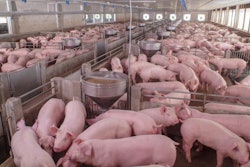
Agricultural economist Jayson Lusk examines what went wrong during the pandemic and what can be done right in the future
The main problem that meat processing plants saw early on in the novel coronavirus (COVID-19) pandemic was one of capacity rather than size, according to one expert.
Jayson Lusk, head of the Agriculture Economics Department at Purdue University, spoke Wednesday during the American Feed Industry Association (AFIA) Purchasing and Ingredient Suppliers Webinar Series about how COVID-19 has affected consumers and the food supply chain.
When meat-packing plants were forced to shut down, it was a strain on the system, he said.
“In good times, this system works pretty well for consumers. It’s an efficient system where we’re able to achieve economies of scale, low-cost production,” he said. “The challenge is that any of these plants are big enough that, if they go down, it can have aggregate effects on the market, both for producers and consumers. And indeed, that’s what we saw.”
So, how can this system be more resilient in the future?
“I hear a lot of people say, ‘What if we had a lot more processing plants?’” Lusk said. “I don’t think that’s necessarily a bad idea, but this focus on small vs. large, I’m not sure that’s the answer to being more resilient.”
That’s because, if a large processor shuts down, a smaller processor can’t make up that lost production in the same amount of time.
“The scale here is pretty enormous, and the problem wasn’t really an issue of size … the issue was excess capacity,” he said. “The problem is that, when one of these plants went down, there wasn’t anywhere else for the extra hogs and cattle to go, and that’s what caused the backup. … There just wasn’t extra capacity for these animals to go toward.”
But, he said, adding capacity is easier said than done.
“That’s a difficult issue to solve, because excess capacity is expensive,” he said.
In the future, Lusk said he thinks processing plants will add more automation to combat labor challenges.
“There’s going to be a lot of interest in more automation, particularly as we’re worried about a pandemic that affects workers. Where there are more workers is where you’re potentially more vulnerable,” he said. “Even before this pandemic, labor was a really significant issue because the overall economy was going so well, the labor market was tight. Now, labor is a different sort of problem.”









